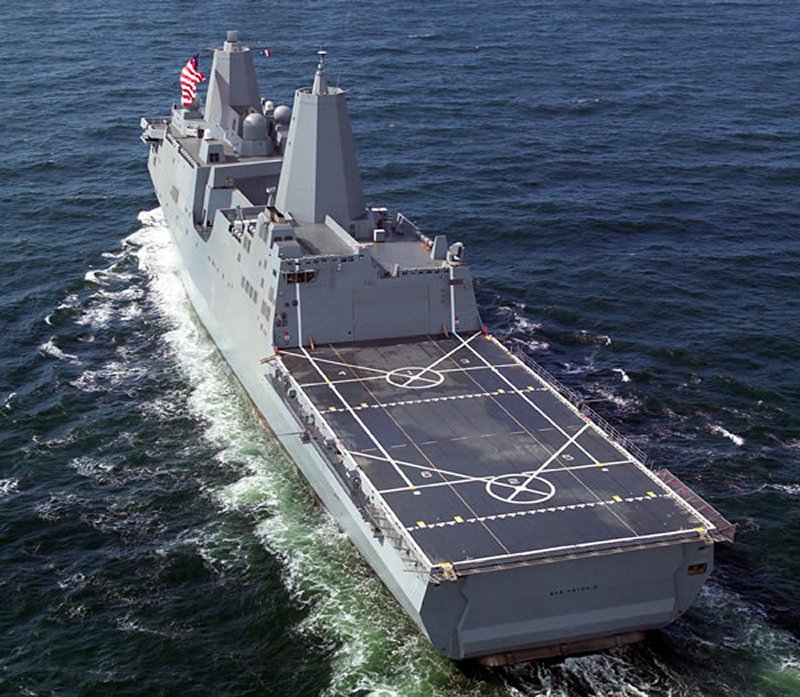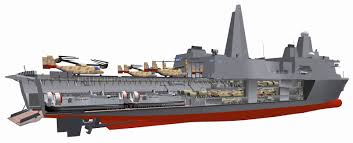LCE Engineers Support U.S. Navy Modernization Efforts with Design and Cost-Analysis of Fuel Delivery System for LPD Class Ships
 LCE Engineers Support U.S. Navy Modernization Efforts.pdf
LCE Engineers Support U.S. Navy Modernization Efforts.pdf
Code 421 of the U.S. Navy’s Naval Surface Warfare Center Philadelphia Division is responsible for engineering management of the design criteria and lifecycle sustainment of both new-construction and in-service U.S. Navy ships. This includes proposing and managing modernization initiatives that will increase efficiency, reliability, maintainability, and ultimately operational availability, while also making every effort to reduce total ownership cost (TOC).
The most versatile vessel in the Navy’s current fleet is an amphibious transport dock or “landing platform, dock” known in Navy jargon as an LPD. The LPD 17 Class is designed to be flexible and support the Marine Corps in all types of Navy missions, making it an essential component of the Navy’s warfighting capabilities. Keeping this class of ships operating reliably and efficiently is vital in a world of fast-changing military priorities.
LPD 17 Class Fuel-delivery System for Diesel Generator Engines Needed an Update to Improve Reliability
The current fuel-delivery system installed on the LPD Caterpillar 3608 Ship Service Diesel Generator (SSDG) Engines is a mechanical fuel-injection system, employing unit injectors controlled by an electro-hydraulic Woodward EGB-13P governor actuator. Fuel injection timing occurs at the same time in all cylinders before every power stroke and only the quantity of fuel injected is changed depending on engine speed and load. In computer-controlled Electronic Unit Injection (EUI) systems, injection timing can be altered based on engine speed and load conditions to ensure optimum power and fuel efficiency are achieved across the entire load range. Additionally, mechanical design flaws such as binding Mechanical Unit Injection (MUI) fuel racks and stuck unit injectors have been found to be a cause of engine over-speed failures, leading to costly crankshaft replacements and engine overhauls.

Multiple early attempts to present this modernization initiative were not warmly received because the project cost seemed to be prohibitive from the start. Beginning in 2016, however, LPD 17 Class managers from various program offices saw value in the catastrophic failure avoidance aspects of the proposal but remained reluctant based on the cost. Finally, in 2018, the Class Management Team, comprised of various program offices, operational commanders, and design engineers all determined that the MUI failures were the greatest problem affecting the LPD 17 Class and thus ranked the EUI Modernization Proposal as the top priority for funding and execution at the FY18 Lifecycle Management Group (LCMG) Council.
For the first time in over five years, the OEM, Caterpillar, was made aware that the U.S. Navy was interested in applying funds to the EUI conversion upgrade. With this much time having passed since the initial cost estimates were done, Caterpillar requested the opportunity to make adjustments. Adjustments to the cost also accompanied adjustments to the design. This resulted in further delay to kicking off the project because reviews of requirements and repeated revisions of Statements of Work needed to be finalized.
Updating the SSDG Engine’s Fuel Delivery System Requires Detailed Scope and Cost Analysis
The combinations of extremely cost-conscious U.S. Navy Program Office(s) coupled with OEM design changes, scope creep and cost-estimate inflation resulted in “pumping the breaks” on the entire project. Two major points needed to be addressed prior to continuing. First, U.S. Navy requirements and priorities with respect to the new design needed to be well understood and agreed upon by all parties. Second, it was necessary to conduct a thorough business-case analysis detailing the initial cost versus all manner of future costs and savings associated with EUI compared to the current cost of the status quo.
LCE’s Marine Engineers Help Build the Navy’s Business Case for Upgrading its Systems
The client requested that LCE marine engineers help break up the log jam created by these issues. In an effort to tightly define the U.S. Navy requirements and priorities associated with the project, LCE facilitated several telephone conferences and finally a face-to-face meeting with the OEM program management and engineering design teams. The goal of these meetings was to define and understand the project requirements, and develop a Statement of Work (SOW) and Bill of Materials (BOM) to be used for the project. Once the SOW and BOM were approved by the U.S. Navy, LCE was tasked with developing a business-case analysis for the installation of the upgrade versus continuing with the current configuration. LCE marine engineers became cost engineers, leaving no stone unturned in this report. Parameters considered included everything from fuel savings and maintenance reduction (including opportunity cost of sailors where PMS was eliminated) to inflation and catastrophic failure avoidance.

The end result was a thorough report that illustrated a worst-case, cost-neutral scenario where minimal fuel efficiencies were gained, but where the likelihood of catastrophic failure was all but eliminated. This was likened to purchasing an insurance policy for the SSDGs. The better, more likely scenario, is a 3.5% gain in fuel efficiency that pays back the project installation costs in approximately six years and returns an additional $10.4 million in fuel and maintenance savings per ship for the remainder of their expected service life. This represents a total return after full payback of $164 million. In addition to the returns provided by the current LPD 17 Class ships, new construction ships (LPD 17 Flight II) will have this upgrade installed prior to delivery. This return was not calculated but will be a major win for TOC reduction moving forward.
Proving a positive and significant return on investment was the final piece of information the U.S. Navy Program Office for Modernization and New Construction required to apply funds that would get the project started and will ultimately end in a better-performing, longer-lasting SSDG. It is fair to say that without LCE’s assistance this project might have been put on a shelf or cancelled altogether.

To learn more about Marine Engineering at LCE,
please visit our website.
